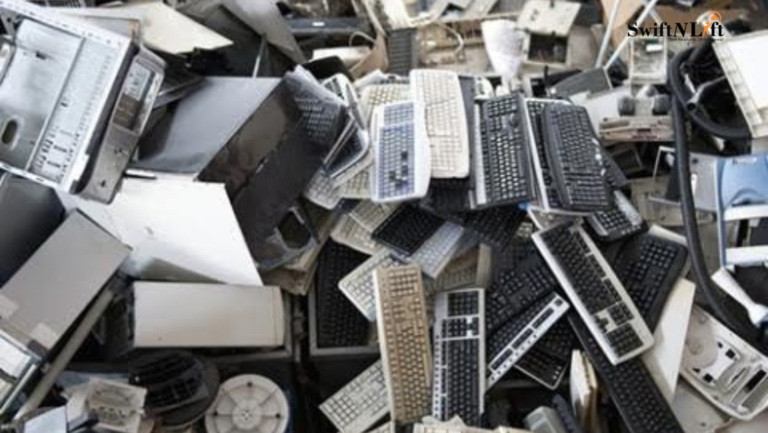
“Turning Electronic-Waste into E-Wow: Crafting a Greener Tomorrow, One Gadget at a Time ♻️🌍 #EcoTechRevolution”
In our rapidly evolving digital age, the proliferation of electronic devices has become an integral part of our daily lives. From smartphones and laptops to televisions and kitchen appliances, electronics have revolutionized the way we live and work. However, the convenience and innovation of these devices come at a significant cost to the environment. Electronic waste, or e-waste, poses a grave threat to our planet, with far-reaching environmental impacts. In this article, we will delve into the growing problem of e-waste, its environmental consequences, and the urgent need for sustainable solutions.
The Rise of E-Waste
E-waste refers to discarded electronic devices and components, including computers, smartphones, tablets, refrigerators, televisions, and more. As technology advances at breakneck speed, the lifespan of these devices has drastically decreased. Consumers are continually upgrading their gadgets, leading to a surge in e-waste generation. According to the Global E-waste Monitor 2020, the world produced a staggering 53.6 million metric tonnes of e-waste in 2019, with an expected increase of 21% by 2030.
Environmental Impacts of E-Waste
- Toxic Chemicals Leach into Soil and Water
One of the most significant environmental dangers posed by e-waste is the release of toxic chemicals into the environment. Electronic devices contain various hazardous substances, such as lead, mercury, cadmium, and flame retardants. When improperly disposed of in landfills or incinerated, these chemicals can leach into the soil and contaminate groundwater, posing a serious risk to ecosystems and human health.
- Air Pollution from Incineration
E-waste is often incinerated to recover valuable materials like gold and copper. However, this practice releases harmful pollutants into the air, including dioxins and furans. These pollutants can cause respiratory problems, birth defects, and even cancer in humans. Moreover, they contribute to the formation of smog and acid rain, harming both the environment and public health.
- Resource Depletion
The production of electronic devices requires vast amounts of natural resources, including rare metals like tantalum, indium, and cobalt. Mining and processing these resources result in habitat destruction, soil erosion, and water pollution. Additionally, the finite nature of these resources means that their depletion exacerbates environmental degradation and raises concerns about future scarcity.
- Energy Consumption
Electronic devices are energy-intensive throughout their lifecycle, from manufacturing to use and disposal. The energy required for manufacturing semiconductors and assembling electronic components contributes to greenhouse gas emissions. Moreover, the constant demand for electricity to power and charge these devices adds to the strain on energy resources and exacerbates climate change.
- E-Waste Exportation
In an attempt to reduce the costs of managing e-waste, many developed countries export their electronic waste to developing nations. This practice, while economically convenient, shifts the environmental burden to countries ill-equipped to handle the massive volumes of e-waste safely. These developing nations often lack the infrastructure and regulatory framework to manage e-waste properly, leading to even more severe environmental consequences.
Sustainable Solutions
Addressing the environmental impacts of e-waste is a multifaceted challenge, but there are several strategies and solutions that can mitigate the damage:
- Extended Producer Responsibility (EPR): Governments can implement EPR policies, requiring electronics manufacturers to take responsibility for their products throughout their lifecycle, from production to disposal. This encourages manufacturers to design products with longevity and recyclability in mind.
- Recycling Programs: Expanding recycling programs for electronic devices can help recover valuable materials and reduce the need for resource-intensive mining. Public awareness campaigns can encourage individuals to recycle their old electronics properly.
- Innovation in Design: Encouraging manufacturers to design products that are modular and easy to upgrade or repair can extend their lifespan and reduce the frequency of disposal.
- Responsible Mining: Promoting responsible and sustainable mining practices for the extraction of rare metals reduces the environmental and social impacts of resource depletion.
- Safe Disposal: Ensuring proper disposal and recycling facilities for e-waste can minimize the release of toxic chemicals into the environment.
- Electronic Waste Legislation: Governments can enact stringent regulations to control the export of e-waste and ensure that it is disposed of safely within their own borders.
- Consumer Education: Raising awareness among consumers about the environmental impacts of e-waste and encouraging them to make more sustainable choices when purchasing and disposing of electronics.
Electronic waste is a ticking time bomb that threatens our environment, public health, and future generations. As the world continues to embrace technology, the problem of e-waste will only worsen unless decisive action is taken. Governments, manufacturers, and consumers all have a role to play in addressing this crisis. By implementing responsible practices, promoting recycling, and supporting sustainable design, we can mitigate the environmental impacts of e-waste and work toward a more sustainable future for our planet. It is imperative that we act now before the mountains of e-waste become insurmountable, leaving us with irreversible damage to our environment.
– Kaumodaki Lonkar



